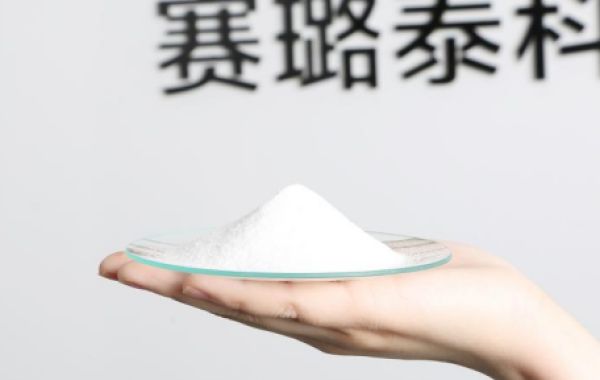As an important derivative of cellulose , cellulose ether has the following properties.
The solubility of soluble cellulose ether in alkaline water solution, water or organic solvent depends on the nature of the etherified group and its degree of substitution (DS). Substances with a DS value below 0.1 are generally insoluble and differ from cellulose only in some physical and technical parameters, such as tensile strength, surface potential energy, water absorption capacity, or dye ability. The modification of cellulose at this rate is mainly used for the reprocessing of cellulose in the textile and paper industry, and is not marketed as cellulose ether products.
When the DS range of the product reaches 0.2~0.5, it begins to dissolve in alkaline water solution, such as 5%~8% NaOH, and the solubility depends on the etherified group. With the increase of the degree of substitution, cellulose ether is gradually dissolved in water. For the anion type and the non-ionic type with strong hydrophilicity, good solubility is also maintained at a high DS level, but if the hydrophobic substituents have the advantage, the solubility will disappear at a higher DS level.
Many industrial cellulose ethers are soluble in water and/or organic solvents. For the anion type, DS should be above 0.4 for water solubility, and for the non-ionic type DS should be above 1. If the hydrophobic etherified group has the advantage, the water solubility will disappear when the DS value is higher than 2, and it will dissolve in proton or polar aprotic solvents, such as low aliphatic alcohols, ketones or ethers. More hydrophobic cellulose ethers are also soluble in chlorinated hydrocarbons, but rarely in pure hydrocarbons. Cellulose ethers containing only anionic groups are almost insoluble in organic solvents in all DS ranges, except in very strong polar aprotic solvents, such as dimethyl sulfoxide. In all cases, cellulose ethers with lower molecular weight are more soluble. The solubility of hydrophobic ether in water will be affected at high temperature. The dissolved product will undergo gelation or agglomeration when heated and then be dissolved again when cooled. This is a unique thermal gel performance and phenomenon of hydrophobic cellulose ether, which has an important impact on production and application.
Most applications require cellulose ether solutions to be clear and even transparent, but some fiber t products can only form turgid solutions, which may contain insoluble particles or fiber free filaments. The main reason is that the reactants are not sufficiently stirred and mixed evenly during the reaction process, or the cellulose molecular chain is very irregular (molecular weight) heterogeneous substitution caused by wide distribution, large difference in raw material sources) and heterogeneous aggregation structure (it is difficult to substitute in the high crystallization region). Impurities in cellulosic materials, such as lignin, ash content, or the presence of crosslinking agents in etherified reactants, may result in the production of insoluble residues.
The viscous cellulose ether solution has a wide viscosity range, and the viscosity range of 2% neutral cellulose ether solution at room temperature can reach 5~10″mPa. S or even wider, and its size is related to the concentration, temperature, average chain length (or degree of polymerization) of macromolecules and the presence of salts or other additives. The chain length of protocellulose macromolecules can be shortened by chemical treatment during the production of cellulose ether.
At specified concentrations and temperatures, the rheological properties of the solution may be Newtonian, pseudoplastic, thixotropic, or even gelatinous, depending on the chain length, substituent assignment, and etherified group properties
Physical properties
Cellulose ether is a white or yellowish solid, usually in granular form or powdery form (humidity up to 10%). The apparent density of the powder ranges from 0.3 to 0.5g/cm”. Some (uncrushed) fibrous products have an apparent density of less than 0.2 g/cm”. According to the use of different manufacturers can adjust different purity levels. High purity products are odorless and tasteless. Untreated products may contain up to 40% (mass fraction) of sodium salts, such as NaCI, sodium acetate, etc. The product can be mixed with additives as required to ensure its stability, solubility controllability and easy processing, etc.
In addition, most cellulose ether industrial products can be mixed with other water-soluble polymers, such as starch products, natural resins, natural colloid, or polyacrylamides, to obtain the required rheological properties and other physical properties of the composite products.
Stability
Cellulose ether is easily affected by cellulase and microorganisms. Enzymes preferentially attack the unreplaced dehydrated glucose units, which will lead to the hydrolysis of macromolecular chains and the reduction of product viscosity. Ether substituents can protect the cellulose backbone, so the stability of cellulose ether increases with the increase of DS or the uniformity of substitution, and only a few unsubstituted dehydrated glucose units are attacked by hydrolases.
Cellulose ether is not easily affected by air, moisture, sunlight, moderate heating and general pollutants, it is relatively stable. Strong oxidants produce peroxide and carbonyl groups, which lead to further degradation of cellulose ether under alkaline conditions. When cellulose basic solution is heated, the viscosity decreases obviously. Strong acids also degrade molecular chains by directly hydrolysis of cellulose acetal bonds. Like other organic polymers, the chain structure of cellulose ether is degraded due to the damage of high-energy radiation. Industrial cellulosic ether products can be added to biokillers, buffers, or reductants to achieve long-term storage stability and constant viscosity under suitable storage conditions.

Solid cellulose ethers are stable at temperatures as high as 80~100℃. Higher temperatures or prolonged heating can lead to cross-linking and the formation of insoluble networks in some cases. The solid product has a slight degradation in the range of 130~150℃, and when heated to 160~200℃, it will have a strong degradation and turn brown, which depends on both the type of ether and the heating conditions. When the neutral aqueous solution is heated for a long time and then cooled to room temperature, it will not cause turning drop, and moderate heating gelation or agglomeration will not affect the viscosity.
You can get more detailed info from our web: www.celotech.com








